- Serbia
Get to know Serbia
- Citizens
Culture and science
Health services
Pension and disability insurance
- Business
Employment
Economy
- Media
- Government
- Contact
Keep in touch
Contact form
Back
Keepin touch
Whether you have a question, comment, suggestion or any problem in the purview of the government, send us your message and we will try to respond as soon as possible. If your problem is not in our purview, we will forward your message to the relevant institution.
Q:
A:
Dimitrijevic reports on successful presentation of Serbian economy in Moscow
Belgrade/Moscow,
1 December 2005
Serbian Minister of Trade, Tourism and Services Bojan Dimitrijevic said today that the three-day national exhibition of Serbian economy, tourism and culture in Moscow, which ended today, was a complete success.
At the closing press conference, Dimitrijevic pointed out that this event is Serbia’s most significant business event in Russia in the past 30 years, and its success is confirmed by an outstanding number of visitors. According to Dimitrijevic, there were 1,500 official visitors on the first day of the exhibition, 1,700 on the second, and approximately 1,000 on the third.
At yesterday’s investment conference, which was also successful according to Dimitrijevic, 30 Russian companies presented a number of projects concerning the privatisation process and investment into Serbia’s energy and oil industries, as well as in infrastructure projects, he said.
Dimitrijevic said that during the conference, Serbian officials talked with their Russian colleagues and discussed concrete cooperation issues.
According to Dimitrijevic, two important issues were initiated at the conference, namely the ratification of the free trade agreement, the outcome of which is expected in the next two weeks, and the write-off of Russia’s $308 million clearing debt to Serbia-Montenegro, which depends on when Bosnia and Herzegovina will ratify the agreement.
The clearing debt will be repaid through an agreement with the Serbian gas company Naftagas, and through Russia’s works on the Djerdap hydroelectric power plant, he said.
He also added that at a presentation of Serbia’s tourist offer, it was agreed that the Tourist Association of Serbia will in the future regularly take part in tourism fairs in Russia, and that ten Russian tour operators and journalist crews will visit Belgrade to get to know Serbia’s tourist capacities, particularly regarding winter and spa tourism.
Dimitrijevic pointed out that after a long period of time, Serbia has finally made a breakthrough concerning the project of constructing the Serbian trade centre in Moscow covering an area of approximately 50,000 square metres, and that in two weeks the Serbian government should send its agreement for the beginning of construction.
A number of contracts were signed at the exhibition, said Dimitrijevic, for example, Serbia’s Coka meat industry and Mona leather industry each signed deals worth $2 million, and the Belgrade-based bus maker Ikarbus made a €2 million deal.
Serbian companies Naftagas, MB Brewery, and Jat Airways also reached agreements on cooperation with several Russian companies.
According to Dimitrijevic, progress has also been made in inter-regional cooperation, for instance, a delegation from the Kaluga region will come to Belgrade on December 11. Serbian companies Delta and NIS, and the Vojvodina executive council held special presentations, and there are indicators of future cooperation in several sectors, such as health, construction engineering, food and textile industries and trade.
The minister pointed out that the first results of this exhibition will be seen in the future, once contracts are signed, and added that this type of event can be organised in other countries as well.
President of the Serbian Chamber of Commerce Slobodan Milosavljevic said that Serbia can take pride in the way its economy, culture and tradition have been presented in the Russian capital.
He voiced hope that money invested in the organisation of the exhibition will see returns in positive business results.
At yesterday’s investment conference, which was also successful according to Dimitrijevic, 30 Russian companies presented a number of projects concerning the privatisation process and investment into Serbia’s energy and oil industries, as well as in infrastructure projects, he said.
Dimitrijevic said that during the conference, Serbian officials talked with their Russian colleagues and discussed concrete cooperation issues.
According to Dimitrijevic, two important issues were initiated at the conference, namely the ratification of the free trade agreement, the outcome of which is expected in the next two weeks, and the write-off of Russia’s $308 million clearing debt to Serbia-Montenegro, which depends on when Bosnia and Herzegovina will ratify the agreement.
The clearing debt will be repaid through an agreement with the Serbian gas company Naftagas, and through Russia’s works on the Djerdap hydroelectric power plant, he said.
He also added that at a presentation of Serbia’s tourist offer, it was agreed that the Tourist Association of Serbia will in the future regularly take part in tourism fairs in Russia, and that ten Russian tour operators and journalist crews will visit Belgrade to get to know Serbia’s tourist capacities, particularly regarding winter and spa tourism.
Dimitrijevic pointed out that after a long period of time, Serbia has finally made a breakthrough concerning the project of constructing the Serbian trade centre in Moscow covering an area of approximately 50,000 square metres, and that in two weeks the Serbian government should send its agreement for the beginning of construction.
A number of contracts were signed at the exhibition, said Dimitrijevic, for example, Serbia’s Coka meat industry and Mona leather industry each signed deals worth $2 million, and the Belgrade-based bus maker Ikarbus made a €2 million deal.
Serbian companies Naftagas, MB Brewery, and Jat Airways also reached agreements on cooperation with several Russian companies.
According to Dimitrijevic, progress has also been made in inter-regional cooperation, for instance, a delegation from the Kaluga region will come to Belgrade on December 11. Serbian companies Delta and NIS, and the Vojvodina executive council held special presentations, and there are indicators of future cooperation in several sectors, such as health, construction engineering, food and textile industries and trade.
The minister pointed out that the first results of this exhibition will be seen in the future, once contracts are signed, and added that this type of event can be organised in other countries as well.
President of the Serbian Chamber of Commerce Slobodan Milosavljevic said that Serbia can take pride in the way its economy, culture and tradition have been presented in the Russian capital.
He voiced hope that money invested in the organisation of the exhibition will see returns in positive business results.
-
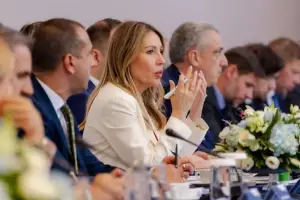 Belgrade/Athens, 17 July 2025
Belgrade/Athens, 17 July 2025Serbia continues to align with EU in field of energy
-
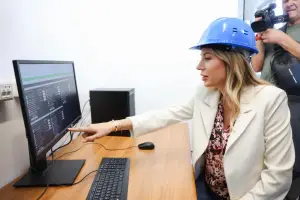 Kostolac, 14 July 2025
Kostolac, 14 July 2025First solar power plant Petka in Kostolac put into trial operation
-
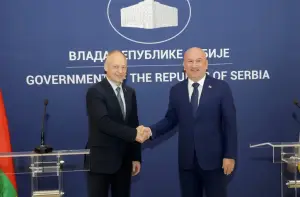 Belgrade, 11 July 2025
Belgrade, 11 July 2025Potential for improving cooperation with Belarus in many areas
-
 Požega, 5 July 2025
Požega, 5 July 2025Section of Pakovraće - Požega highway officially opened
-
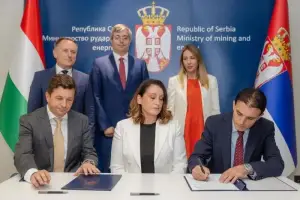 Belgrade, 2 July 2025
Belgrade, 2 July 2025Technical specifications defined for Serbia-Hungary oil pipeline
-
 Belgrade, 30 June 2025
Belgrade, 30 June 2025IMF confirms Serbia successfully implementing all agreed reforms
-
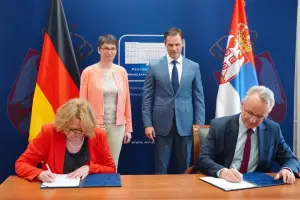 Belgrade, 27 June 2025
Belgrade, 27 June 2025Double Taxation Avoidance Agreement with Germany signed
-
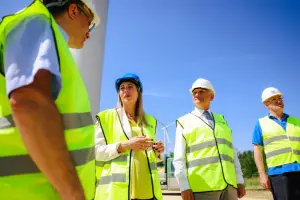 Kostolac, 25 June 2025
Kostolac, 25 June 2025Construction of Kostolac wind farm nearing completion
-
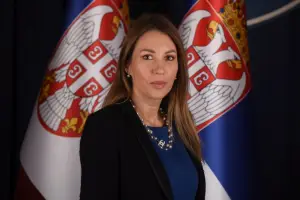 Belgrade, 24 June 2025
Belgrade, 24 June 2025Government supports request for new postponement of sanctions against NIS
-
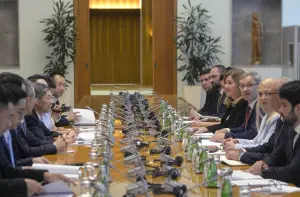 Belgrade, 23 June 2025
Belgrade, 23 June 2025Procedures to facilitate sale of Serbian products to China to be accelerated
